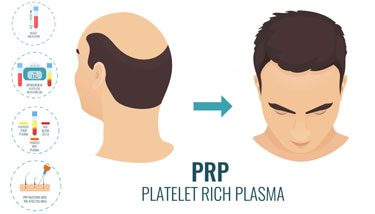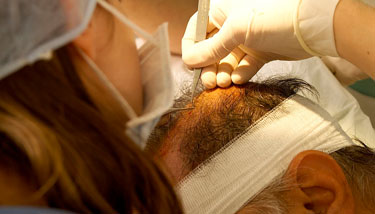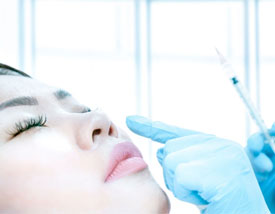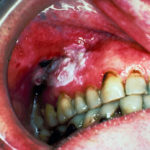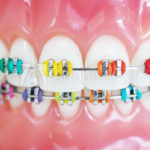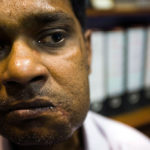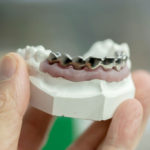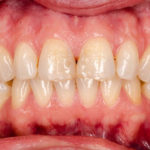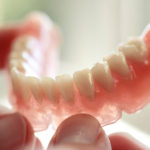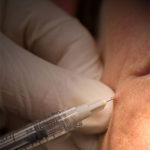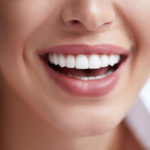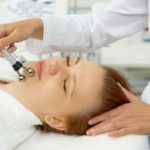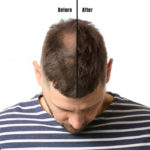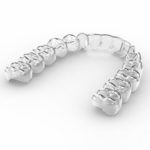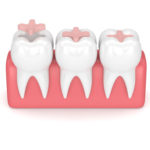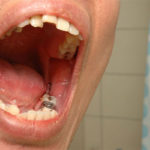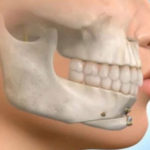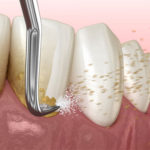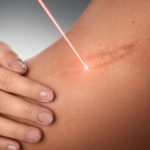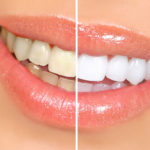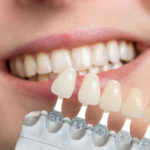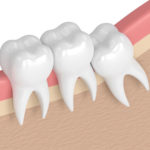Orthognathic surgery is basically surgery performed on the bones of the jaws to change their position and size. It involves repositioning all or part of the upper or lower jaw or chin in alignment. Sometimes, bone may be added, taken away or reshaped. When the jaws are moved forwards or backwards, up or down, or rotated, the soft tissue in the chin, cheeks, lips and tip of the nose move accordingly. Therefore, once the jaws are correctly positioned, the architecture of the facial skeleton is changed and a harmony between the facial features is achieved. This results in a facial profile that is pleasing or in fact even more beautiful to look at.
If the upper jaw is comparatively bigger than the lower jaw, it may lead to a “gummy” smile. Excess gum tissue may be visible which may deflect from the beauty of the smile. This disparity in the size and shape of the jaw bones can be corrected by Orthognathic surgery. The jaw size is decreased and the jaw is placed in a normal position drastically improving smile and appearance.
The shape of the nose is influenced by the shape of the upper jaw. Sometimes, the sharpness of the nose is not apparent because the upper jaw is too big and protruding. In such cases, correcting the shape, size and position of the upper jaw also results in giving the nose a sharp pristine look. More severe variations in the shape of the nose can be corrected along with jaw correction in the same surgical procedure.
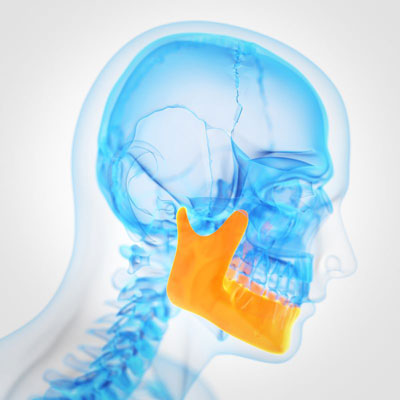

Before deciding the line of treatment, a detailed assessment and analysis of the face & facial bones needs to be done. Many a times, there is often a short period of orthodontic treatment done for subtle and fine detailing of the tooth positions.
The advantage of orthognathic surgery is that immediate results are seen. Also since these surgeries are approached from inside the mouth there are no visible external scars.
Jaw correction surgery brings the teeth and jaws into proper position for better health and appearance. For some patients, the surgery can dramatically enhance appearance and self esteem. Such surgeries hold the key for youngsters who go through a lot of psychological stress over their facial appearance.
UPPER JAW PROTRUSION
An overgrowth of the upper jaw results in a protruding or excessively long upper jaw (maxilla). In such cases, there is an inability to close the mouth normally. It also leads to a “gummy” smile where too much of the gums is seen while smiling. This can be treated with a cosmetic jaw surgery procedure called Anterior Maxillary Osteotomy. The upper jaw is shortened, reshaped and realigned to be more proportionate.
The shape of the nose is influenced by the shape of the upper jaw. Sometimes, the sharpness of the nose is not obvious because the upper jaw is too big and protruding. Occasionally, correcting the shape, size and position of the upper jaw also results in giving the nose a sharp pristine look. More severe variations in the shape of the nose can be corrected along with jaw correction in the same surgical procedure.
This cosmetic jaw correction surgery greatly improves function and enhances cosmetic appearance of the face. Since this procedure is done completely inside the mouth, there are no scars. Commonly, this is done in conjunction with orthodontic treatment, which straightens the teeth. This results in a facial profile that is pleasing or in fact even more beautiful to look at.

UPPER JAW RETRUSION

Sometimes the growth of the upper jaw (maxilla) may be deficient resulting in improper alignment of the jaws and teeth. This is very commonly seen in patients with cleft lip palate defect. As a result the upper jaw is too short for the face which may hide the teeth and create an abnormal bite. This may be treated by surgically lengthening the jaw, making it more balanced as compared to the lower jaw.
The treatment option may vary depending on severity and characteristic of the deformity. The effective line of treatment is decided upon after a detailed analysis of the deformity and attributes.
LOWER JAW PROTRUSION
This occurs when there is an overgrown lower jaw (mandible) that protrudes out beyond the upper jaw causing a “long face” and making the nose and eyes to look disproportionately small. Disproportionate jaws can lead to problems with speaking, biting, chewing, swallowing and breathing. The condition also may cause undue stress on the jaw joint (TMJ) and facial muscles. Improper alignment of jaws and teeth may affect the entire facial appearance.
This may be corrected by surgically reducing excess bone in the lower jaw, shortening and setting the chin back.
The advantage of this kind of orthognathic surgery is that immediate results are seen. Also since these surgeries are approached from inside the mouth there are no visible external scars.
Jaw correction surgery brings the teeth and jaws into proper position for better health and appearance. When the appearance is enhanced, it also boosts self esteem. Such surgeries hold the key for youngsters who go through a lot of psychological stress over their facial appearance.

LOWER JAW RETRUSION

When the chin does not develop to normal/full size, it appears retruded or set back making the nose and eyes to look disproportionately large. This unequal jaw growth may be corrected with orthognathic surgery or distraction osteogenesis. Before deciding the line of treatment, a detailed assessment and analysis of the face & facial bones needs to be done.
Cosmetic orthognathic surgery is performed on the bone of the lower jaw. Portions of the jaw is cut, moved forward and stabilized in a more balanced position. The lower jaw and chin is more forwardly placed improving the appearance and profile. The surgery is performed inside the mouth so there is no scarring.
Harsha Hospital is among the best centers for jaw deformity correction and cosmetic jaw surgery by Orthognathic surgery and Distraction Osteogenesis.
Recovery After Jaw Surgery
It is normal that a patient who goes through the jaw reshaping or jaw correction surgery will feel pain or have some some discomfort after the orthognathic surgery, although the pain varies from one patient to another, depending on their pain tolerance level. So make sure that you take your medications as directed.
You will be able to shower on the second day after the jaw surgery, however, you need to avoid prolonged and hot shower, which may lead to bleeding of your lower jaw, if the surgery is performed there.
You must avoid exercises, any activity such as lifting or activities that may raise your blood pressure or pulse for at least a month following the orthognathic surgery. Any activity that may increase the blood pressure may result in bleeding since the blood vessels are still healing from the surgery. Gentle exercises can be done after 2 weeks, but don’t do any cardio for 4 to 6 weeks after the jaw reshaping. Don’t drive a vehicle for the next 48 hours.
It is common to have minor bleeding from the surgical area in the mouth or from the nose. The bleeding or oozing will usually last for 7 to 10 days after the jaw reshaping. However, when the bleeding activity is excessive, make sure to call your doctor.
Swelling is generally expected after the orthognathic surgery, but this also varies from patient to patient. A large degree of swelling may be anticipated over your cheek area as well as down, over your neck. Maximum swelling will occur at approximately 4 days post surgery, but will slowly subside after approximately 2 weeks. For the next 2 to 3 months, a little swelling about 10 – 20 % is anticipated. For the first 3 to 5 days following the jaw surgery, you can place ice on your face, when you are awake.
On the 4th day, it is recommended to have a warm water bottle aligned to your face, to help reduce the swelling.
For the first 24 hours, nausea and vomiting are common. If vomiting and nausea persist, make sure to let your doctor know.
Use the Pain medication, mouth rinse, and antibiotic prescribed by your doctor. Use them as instructed on the bottle.









